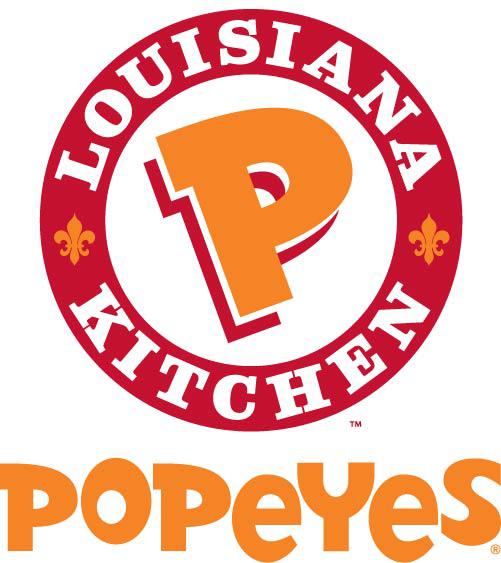Much to my surprise Fox Business News approaches Buffett with the angle that the anemic job creation growth since 2009 is related to poor government policy.
Buffett isn't so sure that things have been that bad, noting that in many ways the 2008 panic was actually worse than the horrors of 1929.
Here he is talking to FBN:
Also check out: Warren Buffett Undervalued Stocks Warren Buffett Top Growth Companies Warren Buffett High Yield stocks, and Stocks that Warren Buffett keeps buyingAbout the author:Canadian Valuehttp://valueinvestorcanada.blogspot.com/
| Currently 0.00/512345 Rating: 0.0/5 (0 votes) | |

Subscribe via Email

Subscribe RSS Comments Please leave your comment:
More GuruFocus Links
| Latest Guru Picks | Value Strategies |
| Warren Buffett Portfolio | Ben Graham Net-Net |
| Real Time Picks | Buffett-Munger Screener |
| Aggregated Portfolio | Undervalued Predictable |
| ETFs, Options | Low P/S Companies |
| Insider Trends | 10-Year Financials |
| 52-Week Lows | Interactive Charts |
| Model Portfolios | DCF Calculator |
RSS Feed  | Monthly Newsletters |
| The All-In-One Screener | Portfolio Tracking Tool |

MORE GURUFOCUS LINKS
| Latest Guru Picks | Value Strategies |
| Warren Buffett Portfolio | Ben Graham Net-Net |
| Real Time Picks | Buffett-Munger Screener |
| Aggregated Portfolio | Undervalued Predictable |
| ETFs, Options | Low P/S Companies |
| Insider Trends | 10-Year Financials |
| 52-Week Lows | Interactive Charts |
| Model Portfolios | DCF Calculator |
RSS Feed  | Monthly Newsletters |
| The All-In-One Screener | Portfolio Tracking Tool |
BRK.A STOCK PRICE CHART

190000 (1y: +15%) $(function(){var seriesOptions=[],yAxisOptions=[],name='BRK.A',display='';Highcharts.setOptions({global:{useUTC:true}});var d=new Date();$current_day=d.getDay();if($current_day==5||$current_day==0||$current_day==6){day=4;}else{day=7;} seriesOptions[0]={id:name,animation:false,color:'#4572A7',lineWidth:1,name:name.toUpperCase()+' stock price',threshold:null,data:[[1367816400000,164990],[1367902800000,164690],[1367989200000,166272.78],[1368075600000,166100],[1368162000000,167780],[1368421200000,167380],[1368507600000,169267],[1368594000000,168940],[1368680400000,167303],[1368766800000,169400],[1369026000000,169200],[1369112400000,169189],[1369198800000,167600],[1369285200000,166980],[1369371600000,166020],[1369717200000,168400],[1369803600000,169402],[1369890000000,172200],[1369976400000,171300],[1370235600000,170911],[1370322000000,169850],[1370408400000,167400],[1370494800000,169877],[1370581200000,172900],[1370840400000,172875],[1370926800000,170150],[1371013200000,169195],[1371099600000,172604],[1371186000000,171259],[1371445200000,172710],[1371531600000,172581],[1371618000000,170952],[1371704400000,167900],[1371790800000,168200],[1372050000000,166439],[1372136400000,168314],[1372222800000,169360],[1372309200000,169326],[1372395600000,168600],[1372654800000,169622],[1372741200000,168799],[1372827600000,168976],[1373000400000,172201],[1373259600000,172500],[1373346000000,173741],[1373432400000,172605],[1373518800000,175644],[1373605200000,175505],[1373864400000,175877],[1373950800000,175849],[1374037200000,176341],[1374123600000,177678],[1374210000000,178275],[1374469200000,178223],[1374555600000,177249],[1374642000000,174581],[1374728400000,175441],[1374814800000,175926],[1375074000000,174505],[1375160400000,173566],[1375246800000,173900],[1375333200000,175700],[1375419600000,176500],[1375678800000,177300],[1375765200000,176855],[1375851600000,175200],[1375938000000,176551],[1376024400000,175100],[1376283600000,175748],[1376370000000,175725],[1376456400000,174755],[1376542800000,172799.9],[1376629200000,173122],[1376888400000,171501.11],[1376974800000,173000],[1377061200000,170800],[1377147600000,172206],[1377234000000,171320.46],[1377493200000,171000.5],[1377579600000,167350],[1377666000000,168585.5],[1377752400000,168050],[1377838! 800000,167050],[1378184400000,167993],[1378270800000,168259],[1378357200000,168240.56],[1378443600000,167565],[1378702800000,168880],[1378789200000,170489.44],[1378875600000,171340],[1378962000000,170000],[1379048400000,170155],[1379307600000,172500],[1379394000000,173299],[1379480400000,175005],[1379566800000,175825.51],[1379653200000,175000],[1379912400000,173539.9],[1379998800000,172500],[1380085200000,173368],[1380171600000,173600],[1380258000000,172210],[1380517200000,170410],[1380603600000,171028],[1380690000000,171500],[1380776400000,169995],[1380862800000,170743],[1381122000000,169455],[1381208400000,167452],[1381294800000,168205],[1381381200000,172485],[1381467600000,173605],[1381726800000,174200],[1381813200000,171920],[1381899600000,174872],[1381986000000,175286],[1382072400000,175400],[1382331600000,175120],[1382418000000,176140],[1382504400000,174600],[1382590800000,175021],[1382677200000,175435],[1382936400000,175400],[1383022800000,175991],[1383109200000,174340],[1383195600000,172994.8],[1383282000000,173122.5],[1383544800000,172089],[1383631200000,171754],[1383717600000,172220],[1383804000000,171090],[1383890400000,173201],[1384149600000,173485],[1384236000000,171211],[1384322400000,172150],[1384408800000,173320],[1384495200000,174300],[1384754400000,173810],[1384840800000,173760.2],[1384927200000,172480],[1385013600000,174621],[1385100000000,174850],[1385359200000,173311],[1385445600000,174840],[1385532000000,174625],[1385704800000,174750],[1385964000000,172940],[1386050400000,172131],[1386136800000,173500],[1386223200000,173000],[1386309600000,174940],[1386568800000,175735],[1386655200000,173470],[1386741600000,171630],[1386828000000,171500],[1386914400000,171100],[1387173600000,171139],[1387260000000,170420],[1387346400000,174250],[1387432800000,174649],[1387519200000,175600],[1387778400000,175898],[1387864800000,176010],[1388037600000,176900],[1388124000000,177160],[1388383200000,177069.2],[1388469600000,177900],[1388642400000,176320],[1388728800000,176336],[1388988000000,174500],[13! 890744000! 00,174195],[1389160800000,173284],[1389247200000,172965],[1389333600000,172540],[1389592800000,170893.33],[1389679200000,172250],[1389765600000,173665],[1389852000000,172773],[1389938400000,172350],[1390284000000,172500],[1390370400000,172895],[1390456800000,170310],[1390543200000,168500],[1390802400000,168210.9],[1390888800000,169212],[1390975200000,168748],[1391061600000,170450],[1391148000000,169511.9],[1391407200000,165265],[1391493600000,164817],[1391580000000,164075.1],[1391666400000,166000],[1391752800000,169010],[1392012000000,169120],[1392098400000,170515],[1392184800000,170140],[1392271200000,172222],[1392357600000,172425],[1392703200000,172292],[1392789600000,170080],[1392876000000,169844],[1392962400000,170120],[1393221600000,170006],[1393308000000,170721],[1393394400000,170473],[1393826400000,174500],[1393912800000,177989.08],[1393999200000,178655],[1394085600000,182175],[1394172000000,183772],[1394427600000,186400],[1394514000000,187101],[1394600400000,187750],[1394686800000,185750],[1394773200000,183860],[1395032400000,185050],[1395118800000,184860],[1395205200000,183860],[1395291600000,186540],[1395378000000,187850],[1395637200000,186520],[1395723600000,186587],[1395810000000,184540],[1395896400000,185200],[1395982800000,185149],[1396328400000,187213],[1396414800000,186759],[1396501200000,186287],[1396587600000,185753],[1396846800000,184700],[1396933200000,184640],[1397019600000,185897],[1397106000000,183402],[1397192400000,182759.5],[1397451600000,183212],[1397538000000,185640],[1397624400000,188900],[1397710800000,190639],[1398056400000,189482],[1398142800000,190720],[1398229200000,190800],[1398315600000,190500],[1398402000000,190686],[1398661200000,191400],[1398747600000,192545],[1398920400000,193483],[1399006800000,192255],[1399293703000,192255],[1399293703000,192255],[1399301991000,190000]]};var reporting=$('#reporting');Highcharts.setOptions({lang:{rangeSelectorZoom:""}});var chart=new Highcharts.StockChart({chart:{renderTo:'container_chart',marginRight:20,borderRadius:0,events:{lo! ad:functi! on(){var chart=this,axis=chart.xAxis[0],buttons=chart.rangeSelector.buttons;function reset_all_buttons(){$.each(chart.rangeSelector.buttons,function(index,value){value.setState(0);});series=chart.get('BRK.A');series.remove();} buttons[0].on('click',function(e){chart.showLoading();reset_all_buttons();chart.rangeSelector.buttons[0].setState(2);var extremes=axis.getExtremes();$.getJSON('/modules/chart/price_chart_json.php?symbol=BRK.A&ser=1d',function(data){if(data!=null){var extremes=axis.getExtremes();axis.setExtremes(data[1][0][0],data[1][data[1].length-1][0]);chart.addSeries({name:'BRK.A',id:'BRK.A',color:'#4572A7',data:data[1]});if(data[0][1]>=0){display=data[0][0]+" (1D: +"+data[0][1]+"%)";reporting.html(display);}else{display=data[0][0]+" (1D: "+data[0][1]+"%)";reporting.html(display);} chart.hideLoading();}});});buttons[1].on('click',function(e){chart.showLoading();reset_all_buttons();chart.rangeSelector.buttons[1].setState(2);var extremes=axis.getExtremes();$.getJSON('/modules/chart/price_chart_json.php?symbol=BRK.A&ser=5d',function(data){if(data!=null){var extremes=axis.getExtremes();axis.setExtremes(data[1][0][0],data[1][data[1].length-1][0]);chart.addSeries({name:'BRK.A',id:'BRK.A',color:'#4572A7',data:data[1]});if(data[0][1]>=0){display=data[0][0]+" (5D: +"+data[0][1]+"%)";reporting.html(display);}else{display=data[0][0]+" (5D: "+data[0][1]+"%)";reporting.html(display);}} chart.hideLoading();});});buttons[2].on('click',function(e){chart.showLoading();reset_all_buttons();chart.rangeSelector.buttons[2].setState(2);var extremes=axis.getExtremes();$.getJSON('/modules/chart/price_chart_json.php?symbol=BRK.A&ser=ytd',function(data){if(data!=null){var extremes=axis.getExtremes();axis.setExtremes(data[1][0][0],data[1][data[1].length-1][0]);chart.addSeries({name:'BRK.A',id:'BRK.A',color:'#4572A7',data:data[1]});if(data[0][1]>=0){display=data[0][0]+" (YTD: +"+data[0][1]+"%)";reporting.html(display);}else{display=data[0][0]+" (YTD: "+data[0][1]+"%)"





 AlamyIf you're a coffee lover who buys a $4 latte everyday, an espresso machine or French press could save you more than $1,000 a year. If you're frugal, you might frequently find yourself worrying over purchases, asking yourself, "Is this too expensive?" But that's not the right mindset -- the questions you should be asking yourself are "What value does this have to me once I buy it?" and "Can this save me money?" In fact, there are many purchases -- cheap and expensive alike -- that can save you (or make you) money in the long run. Here are just a few that can save you hundreds or thousands over time. 1. A bike or transit pass. If you live in an area where you can forgo having a vehicle, you can save thousands of dollars a year. Just think, no more car payments or pricey repairs. And that's just the big stuff -- you won't have to pay for car washes or gas either. Don't think you can manage without a car for occasional errands? Many cities now have Zipcar or other car sharing programs, which allow members to rent cars for short time periods and low rates.
AlamyIf you're a coffee lover who buys a $4 latte everyday, an espresso machine or French press could save you more than $1,000 a year. If you're frugal, you might frequently find yourself worrying over purchases, asking yourself, "Is this too expensive?" But that's not the right mindset -- the questions you should be asking yourself are "What value does this have to me once I buy it?" and "Can this save me money?" In fact, there are many purchases -- cheap and expensive alike -- that can save you (or make you) money in the long run. Here are just a few that can save you hundreds or thousands over time. 1. A bike or transit pass. If you live in an area where you can forgo having a vehicle, you can save thousands of dollars a year. Just think, no more car payments or pricey repairs. And that's just the big stuff -- you won't have to pay for car washes or gas either. Don't think you can manage without a car for occasional errands? Many cities now have Zipcar or other car sharing programs, which allow members to rent cars for short time periods and low rates.
 402.35 (1y: +88%) $(function(){var seriesOptions=[],yAxisOptions=[],name='NFLX',display='';Highcharts.setOptions({global:{useUTC:true}});var d=new Date();$current_day=d.getDay();if($current_day==5||$current_day==0||$current_day==6){day=4;}else{day=7;} seriesOptions[0]={id:name,animation:false,color:'#4572A7',lineWidth:1,name:name.toUpperCase()+' stock price',threshold:null,data:[[1369717200000,214.19],[1369803600000,215.34],[1369890000000,222.66],[1369976400000,226.25],[1370235600000,221.97],[1370322000000,225.31],[1370408400000,223.46],[1370494800000,217.74],[1370581200000,220.22],[1370840400000,220.93],[1370926800000,214.46],[1371013200000,207.64],[1371099600000,215.39],[1371186000000,213.99],[1371445200000,229.23],[1371531600000,228.83],[1371618000000,232.31],[1371704400000,223.52],[1371790800000,216.9],[1372050000000,215.6],[1372136400000,212.9],[1372222800000,212.1],[1372309200000,214.97],[1372395600000,211.09],[1372654800000,224.28],[1372741200000,221.46],[1372827600000,220.91],[1373000400000,225.1],[1373259600000,233.1],[1373346000000,247.382],[1373432400000,243.82],[1373518800000,244.17],[1373605200000,257.261],[1373864400000,257.98],[1373950800000,260.48],[1374037200000,267.92],[1374123600000,266.41],[1374210000000,264.576],[1374469200000,261.96],[1374555600000,250.26],[1374642000000,241.3],[1374728400000,246.74],[1374814800000,246.31],[1375074000000,244.96],[1375160400000,243.76],[1375246800000,244.484],[1375333200000,249.12],[1375419600000,246.18],[1375678800000,253.84],[1375765200000,255.9],[1375851600000,249.21],[1375938000000,250.4],[1376024400000,252.75],[1376283600000,256.6],[1376370000000,259.19],[1376456400000,261.81],[1376542800000,253.41],[1376629200000,258.87],[1376888400000,259.78],[1376974800000,273.29],[1377061200000,270.37],[1377147600000,269.75],[1377234000000,278.36],[1377493200000,282.72],[1377579600000,276.04],[1377666000000,283.36],[1377752400000,287.85],[1377838800000,283.91],[1378184400000,289],[1378270800000,292.43],[1378357200000,295.11],[1378443600000,291.54],[1378702800000,294.15],[1378789200000,313.06],[1378875600000,308.3],[1378962000000,301.406],[1379048400000,305.65],[1379307600000,302.16],[1379394000000,299.55],[1379480400000,306.92],[1379566800000,305.498],[1379653200000,313.83],[1379912400000,302.04],[1379998! 800000,306.49],[1380085200000,307.14],[1380171600000,313.51],[1380258000000,312.4],[1380517200000,309.21],[1380603600000,324.62],[1380690000000,330.73],[1380776400000,321.72],[1380862800000,327.26],[1381122000000,318.16],[1381208400000,302.32],[1381294800000,288.43],[1381381200000,303.994],[1381467600000,300.848],[1381726800000,324.36],[1381813200000,321.69],[1381899600000,322.878],[1381986000000,330.1],[1382072400000,333.5],[1382331600000,354.99],[1382418000000,322.524],[1382504400000,330.24],[1382590800000,331.22],[1382677200000,328.031],[1382936400000,314],[1383022800000,327.3],[1383109200000,318.14],[1383195600000,322.48],[1383282000000,329.265],[1383544800000,337.6],[1383631200000,341.5],[1383717600000,335.63],[1383804000000,326.86],[1383890400000,334.9],[1384149600000,337.91],[1384236000000,333.73],[1384322400000,335.284],[1384408800000,342.57],[1384495200000,349.76],[1384754400000,341.77],[1384840800000,337.29],[1384927200000,339.52],[138501360000
402.35 (1y: +88%) $(function(){var seriesOptions=[],yAxisOptions=[],name='NFLX',display='';Highcharts.setOptions({global:{useUTC:true}});var d=new Date();$current_day=d.getDay();if($current_day==5||$current_day==0||$current_day==6){day=4;}else{day=7;} seriesOptions[0]={id:name,animation:false,color:'#4572A7',lineWidth:1,name:name.toUpperCase()+' stock price',threshold:null,data:[[1369717200000,214.19],[1369803600000,215.34],[1369890000000,222.66],[1369976400000,226.25],[1370235600000,221.97],[1370322000000,225.31],[1370408400000,223.46],[1370494800000,217.74],[1370581200000,220.22],[1370840400000,220.93],[1370926800000,214.46],[1371013200000,207.64],[1371099600000,215.39],[1371186000000,213.99],[1371445200000,229.23],[1371531600000,228.83],[1371618000000,232.31],[1371704400000,223.52],[1371790800000,216.9],[1372050000000,215.6],[1372136400000,212.9],[1372222800000,212.1],[1372309200000,214.97],[1372395600000,211.09],[1372654800000,224.28],[1372741200000,221.46],[1372827600000,220.91],[1373000400000,225.1],[1373259600000,233.1],[1373346000000,247.382],[1373432400000,243.82],[1373518800000,244.17],[1373605200000,257.261],[1373864400000,257.98],[1373950800000,260.48],[1374037200000,267.92],[1374123600000,266.41],[1374210000000,264.576],[1374469200000,261.96],[1374555600000,250.26],[1374642000000,241.3],[1374728400000,246.74],[1374814800000,246.31],[1375074000000,244.96],[1375160400000,243.76],[1375246800000,244.484],[1375333200000,249.12],[1375419600000,246.18],[1375678800000,253.84],[1375765200000,255.9],[1375851600000,249.21],[1375938000000,250.4],[1376024400000,252.75],[1376283600000,256.6],[1376370000000,259.19],[1376456400000,261.81],[1376542800000,253.41],[1376629200000,258.87],[1376888400000,259.78],[1376974800000,273.29],[1377061200000,270.37],[1377147600000,269.75],[1377234000000,278.36],[1377493200000,282.72],[1377579600000,276.04],[1377666000000,283.36],[1377752400000,287.85],[1377838800000,283.91],[1378184400000,289],[1378270800000,292.43],[1378357200000,295.11],[1378443600000,291.54],[1378702800000,294.15],[1378789200000,313.06],[1378875600000,308.3],[1378962000000,301.406],[1379048400000,305.65],[1379307600000,302.16],[1379394000000,299.55],[1379480400000,306.92],[1379566800000,305.498],[1379653200000,313.83],[1379912400000,302.04],[1379998! 800000,306.49],[1380085200000,307.14],[1380171600000,313.51],[1380258000000,312.4],[1380517200000,309.21],[1380603600000,324.62],[1380690000000,330.73],[1380776400000,321.72],[1380862800000,327.26],[1381122000000,318.16],[1381208400000,302.32],[1381294800000,288.43],[1381381200000,303.994],[1381467600000,300.848],[1381726800000,324.36],[1381813200000,321.69],[1381899600000,322.878],[1381986000000,330.1],[1382072400000,333.5],[1382331600000,354.99],[1382418000000,322.524],[1382504400000,330.24],[1382590800000,331.22],[1382677200000,328.031],[1382936400000,314],[1383022800000,327.3],[1383109200000,318.14],[1383195600000,322.48],[1383282000000,329.265],[1383544800000,337.6],[1383631200000,341.5],[1383717600000,335.63],[1383804000000,326.86],[1383890400000,334.9],[1384149600000,337.91],[1384236000000,333.73],[1384322400000,335.284],[1384408800000,342.57],[1384495200000,349.76],[1384754400000,341.77],[1384840800000,337.29],[1384927200000,339.52],[138501360000






 Popular Posts: What NOT to Buy in a Retirement Plan401k Moves to Make this SpringReynolds American and Lorillard – A Merger to Ignore Recent Posts: AT&T Stock: Bad DirecTV Acquisition Won’t Hurt Dividend Reynolds American and Lorillard – A Merger to Ignore Is It Time to Buy Russian and Chinese Stocks? View All Posts
Popular Posts: What NOT to Buy in a Retirement Plan401k Moves to Make this SpringReynolds American and Lorillard – A Merger to Ignore Recent Posts: AT&T Stock: Bad DirecTV Acquisition Won’t Hurt Dividend Reynolds American and Lorillard – A Merger to Ignore Is It Time to Buy Russian and Chinese Stocks? View All Posts  Whether or not this is a good move for AT&T shareholders is debatable. AT&T is buying a mature business with limited growth potential domestically. The cash portion of the deal – $14.5 billion – will need to be largely financed by debt, as AT&T only has about $3.8 billion in cash on hand.
Whether or not this is a good move for AT&T shareholders is debatable. AT&T is buying a mature business with limited growth potential domestically. The cash portion of the deal – $14.5 billion – will need to be largely financed by debt, as AT&T only has about $3.8 billion in cash on hand.
 Reuters
Reuters 

 Volatility concerns
Volatility concerns 

 Karen Roach/Shutterstock
Karen Roach/Shutterstock  MORE GURUFOCUS LINKS
MORE GURUFOCUS LINKS